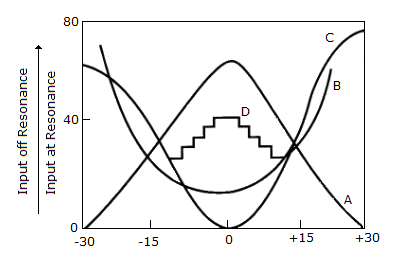Electronics and Communication Engineering - Radio Receivers
Exercise : Radio Receivers - Section 2
- Radio Receivers - Section 1
- Radio Receivers - Section 2
31.
The selectivity curve of a standard receiver is represented by


32.
Which of the following statement about the advantage of phase discriminator over the slope detector is false?
33.
Fidelity of a receiver represents
34.
Which of the following produces upper and lower side frequencies?
35.
The passband of the tuned circuits of a radio receiver should be equal to
Quick links
Quantitative Aptitude
Verbal (English)
Reasoning
Programming
Interview
Placement Papers